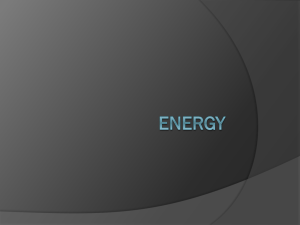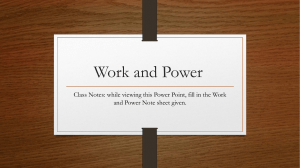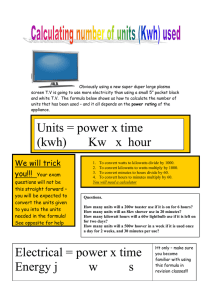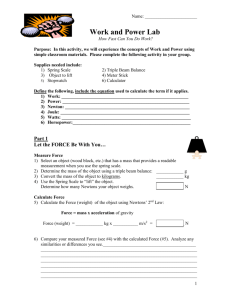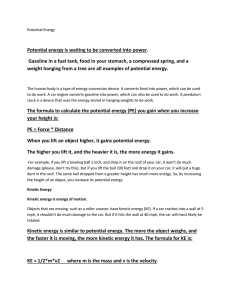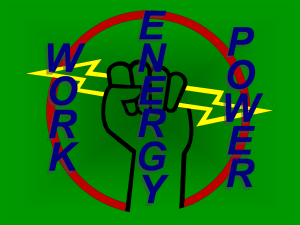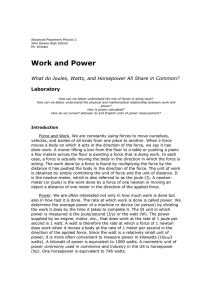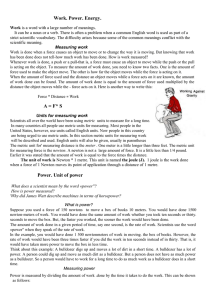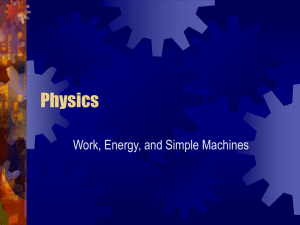energy notes
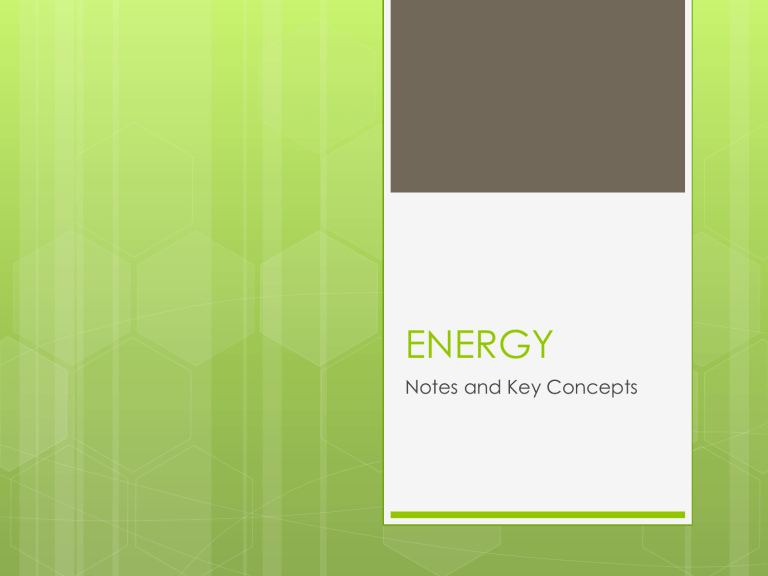
ENERGY
Notes and Key Concepts
Work
An object’s motion is related to both force and how the force acts.
The quantity force X time = impulse
The quantity force X distance = work
WORK
1.
2.
Two factors are considered when work is done
The application of a force
The movement of something by that force
The work done on an object by an applied force is the product of the force and the distance through which the object moved
Work=force x distance
W=Fd
POWER
Power is the rate at which work is done
Power=work done/time interval
The unit of power is the joule per second, also known as the watt
One watt (W) of power is expended when one joule of work is done in one second
1 Kilowatt (kW)= 100 watts
1 megawatt (MW) = one million watts
Metric System vs. United States
In the metric system, automobiles are rated in kilowatts
In the U.S, we rate engines in units of horsepower and electricity in kilowatts
One horsepower (hp, is the same as 0.75 kW, so an engine rated at 134 hp is a 100kW engine
of something
Mechanical Energy
Potential
Potential energy is stored and held in readiness (a spring or stretched rubber band)
Examples: fossil fuels, electric batteries, and food
Gravitational potential energy= weight x height
PE=mgh
Kinetic
Kinetic energy is energy of motion
It depends on mass and speed of an object
Kinetic energy = ½ mass x speed2

